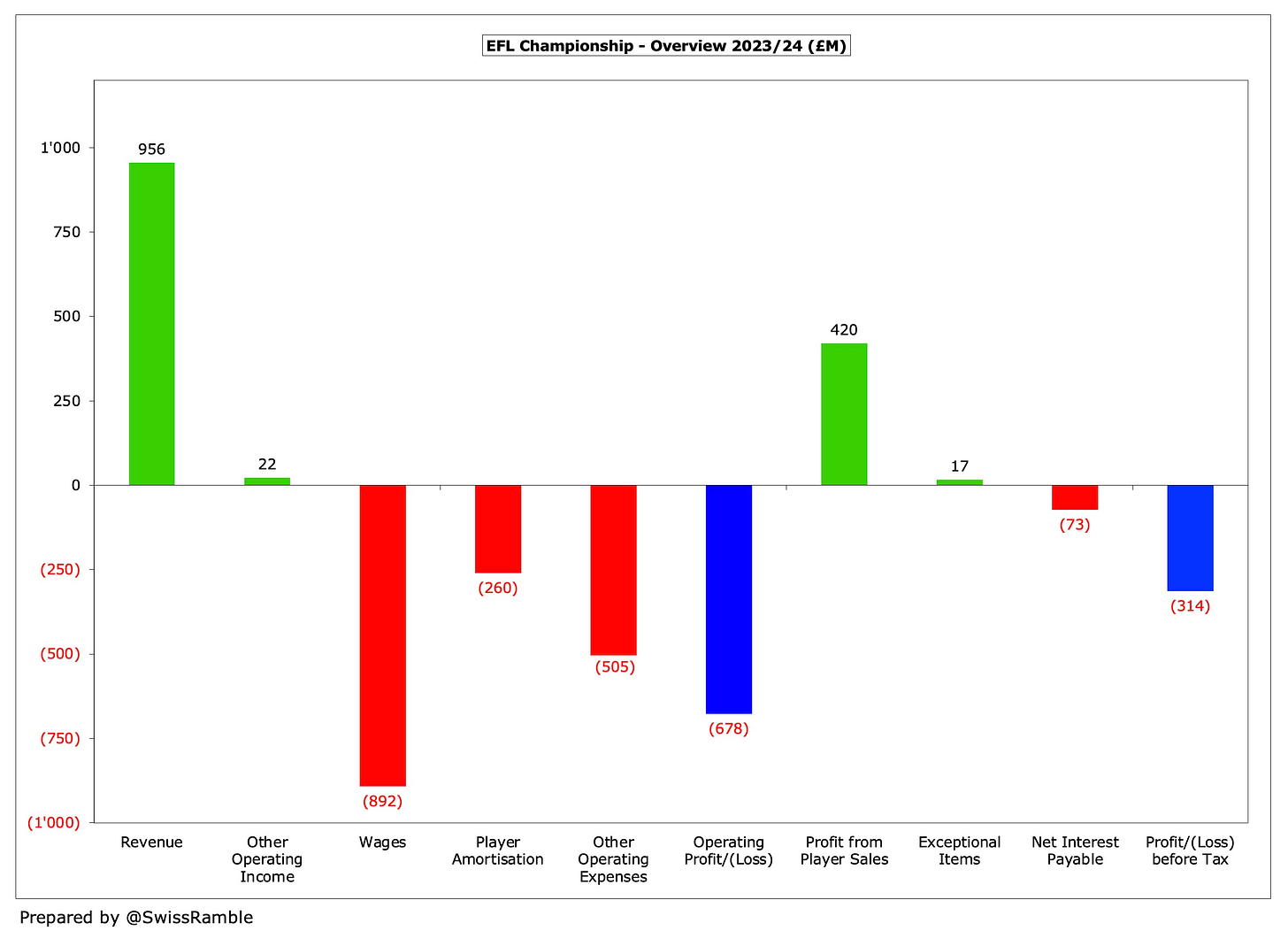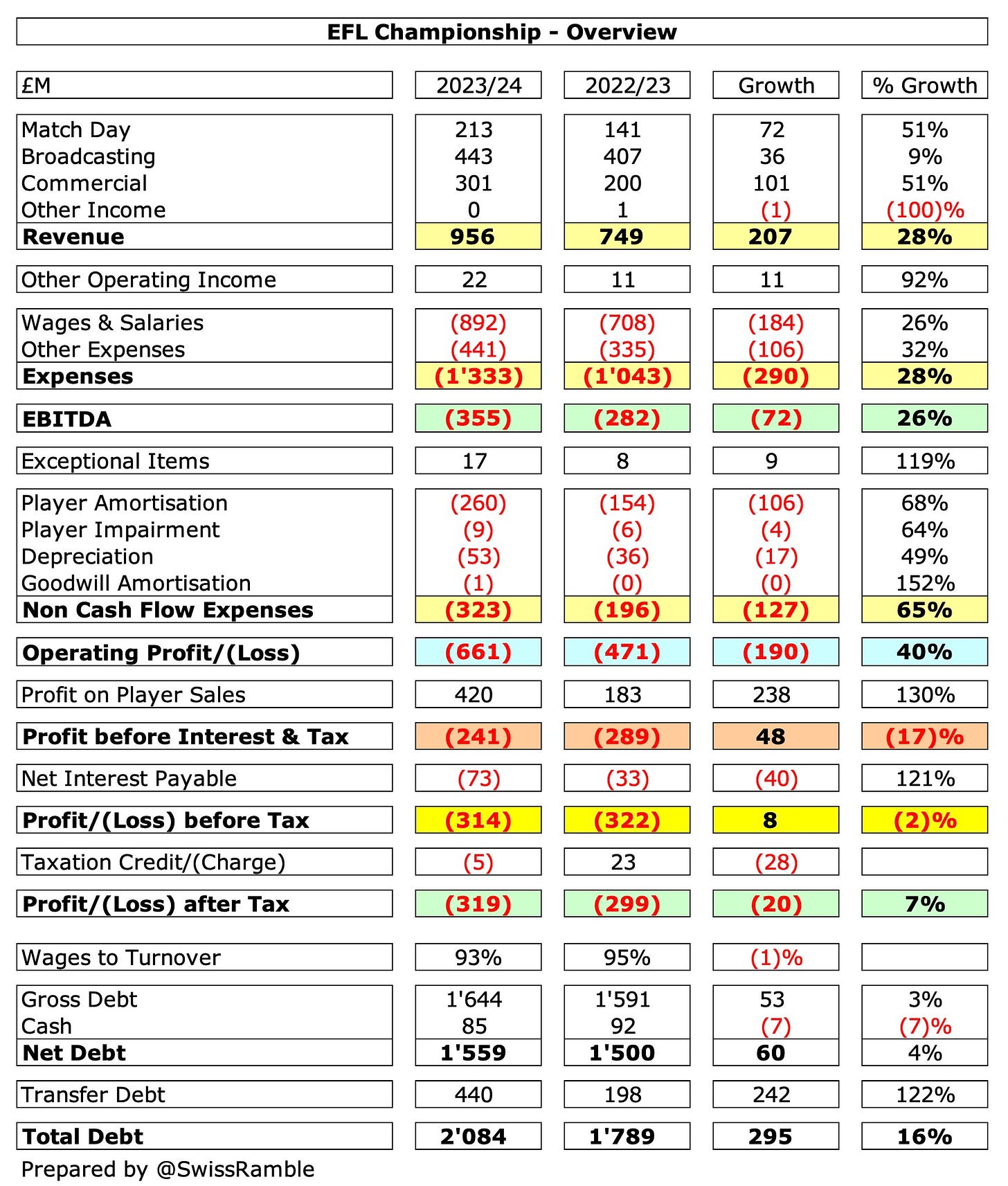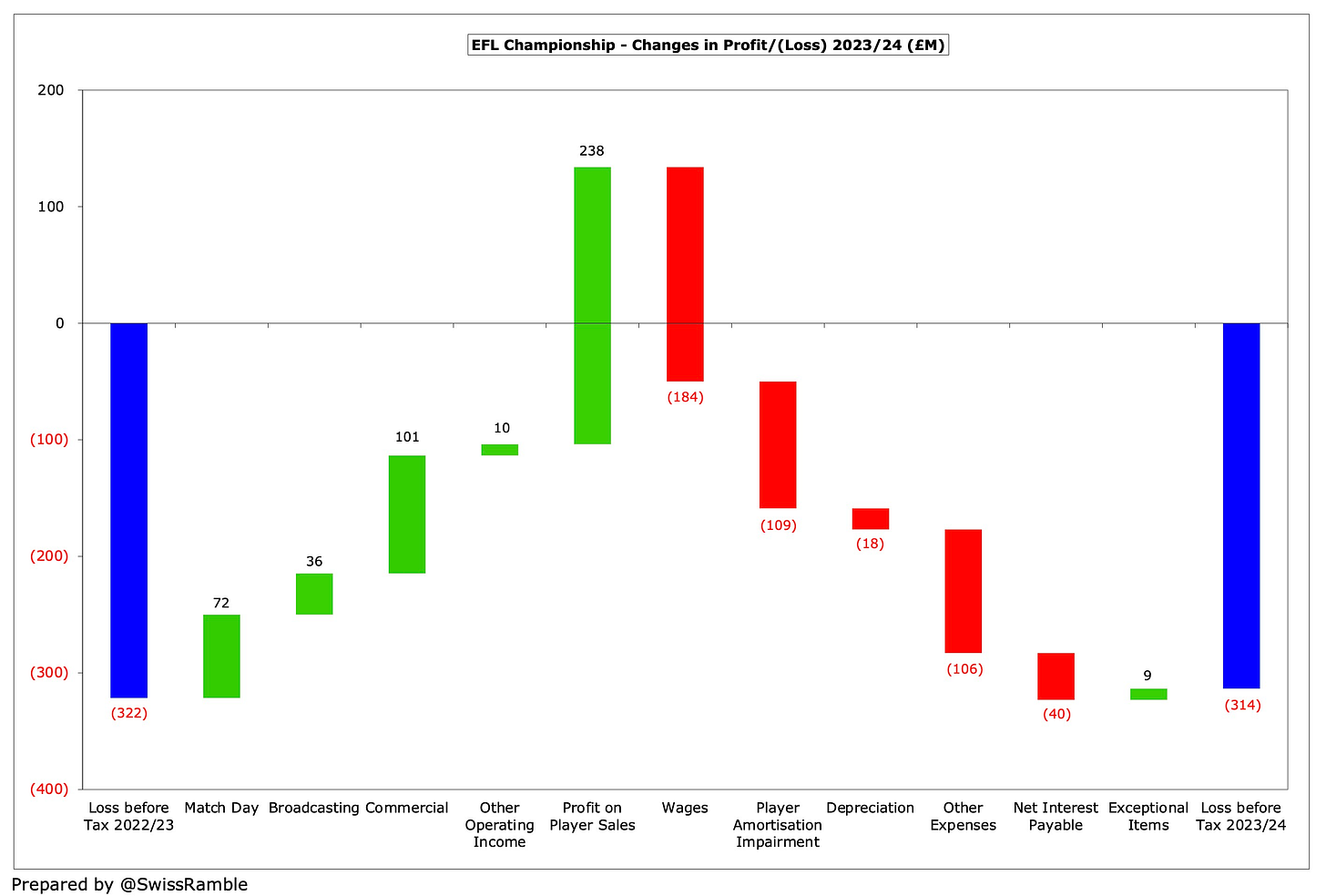Now that all the clubs in the EFL Championship have published their accounts for the 2023/24 season, we can take our customary look at the trends over the last 10 years, covering the finances in England’s second tier since 2014/15.
The figures for 2019/20 and especially 2020/21, when virtually all games were played behind closed doors, were significantly impacted by the COVID pandemic, but it’s been pretty much business as usual for the last three seasons.
Before I get into the 10-year trends, it’s worth understanding the business model in the Championship, which was once again illustrated by the financial results in 2023/24.
Overview
The 24 clubs generated just under £1 bln of revenue (£956m to be precise) and £22m other operating income, but then paid out £1.7 bln in operating expenses, split between £892m wages, £260m player amortisation and £505m other expenses.
This led to a sizeable £678m operating loss, exacerbated by £73m net interest payable, which was only partially offset by £420m profit from player sales and £17m exceptional items.
As a result, the division as a whole lost £314m.
That net loss was almost exactly the same as the previous season’s deficit of £322m, but there were some significant ups and downs.
Revenue shot up £207m (28%) from £749m to £956m, while profit from player sales more than doubled from £183m to £420m. However, this was offset by a steep increase in operating expenses, which were a third higher, rising £417m; while net interest payable rose £40m.
There was significant growth in all three revenue streams, as commercial and match day both increased by around 50%, up £101m and £72m respectively. Broadcasting was £36m (9%) higher.
Staff costs also showed sizeable increases, as wages rose £184m (26%) and player amortisation was up £106m (68%). In addition, other expenses grew £106m (32%), while depreciation rose £17m (49%).
Impact of The Three Relegated Clubs
This is obviously substantial growth in a single season, but this was largely driven by the relegation of three sizeable clubs to the Championship (Leeds United, Leicester City and Southampton). They replaced three smaller clubs that were promoted to the Premier League (Burnley, Luton Town and Sheffield United).
Keep reading with a 7-day free trial
Subscribe to The Swiss Ramble to keep reading this post and get 7 days of free access to the full post archives.







